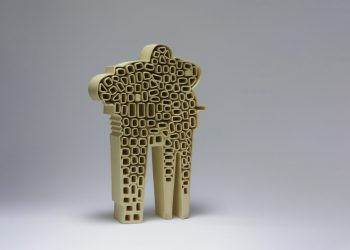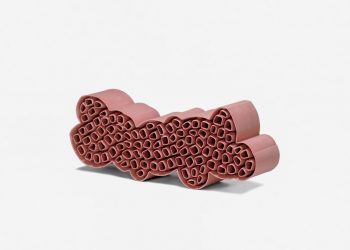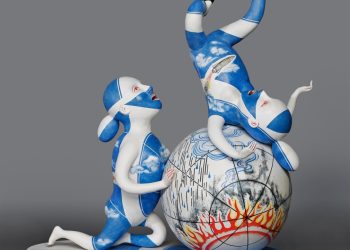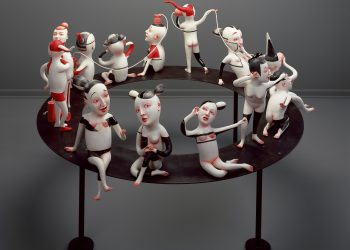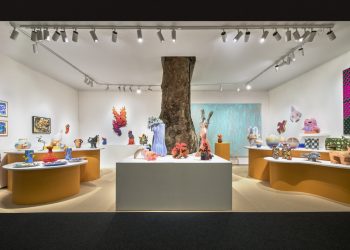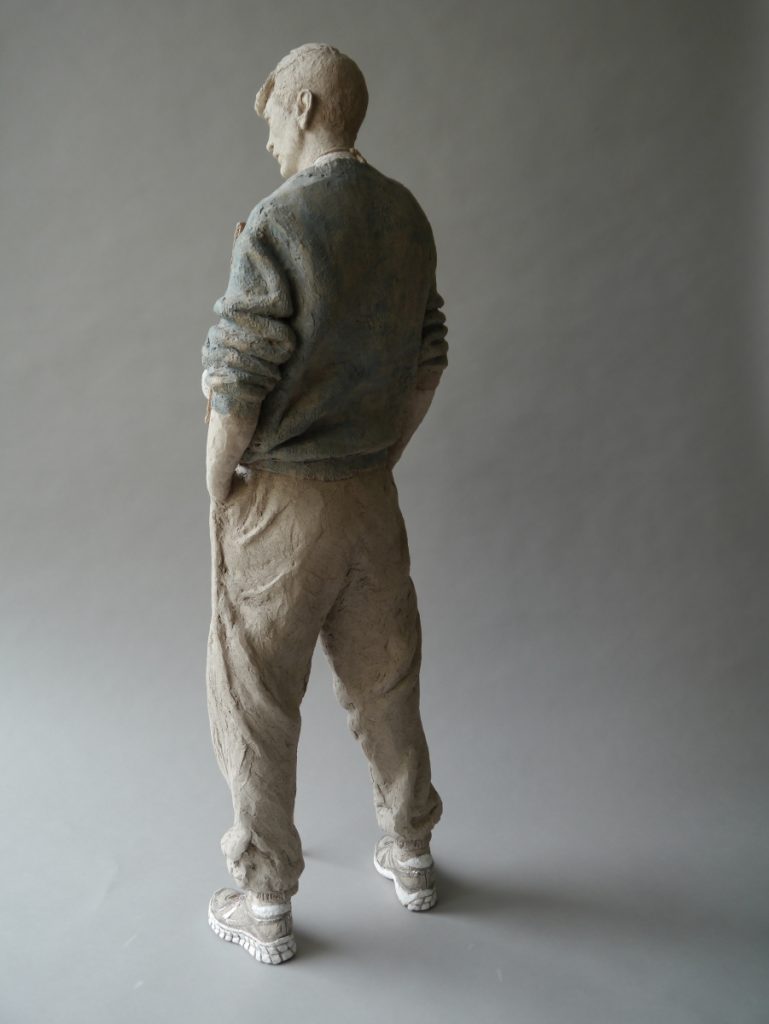
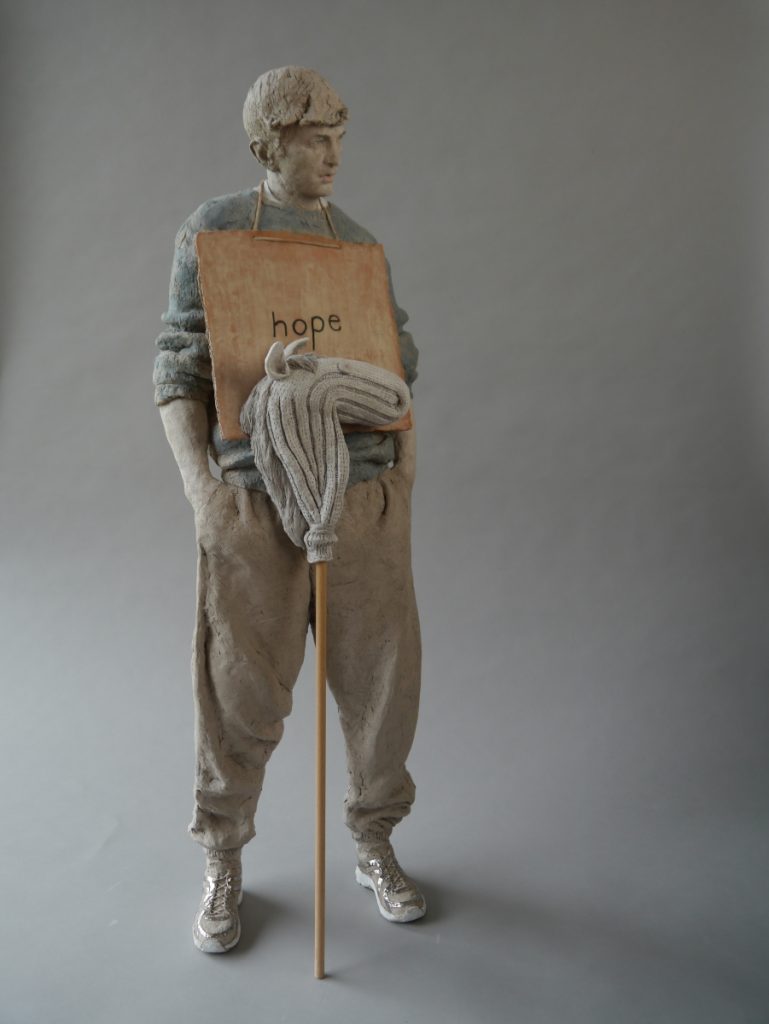
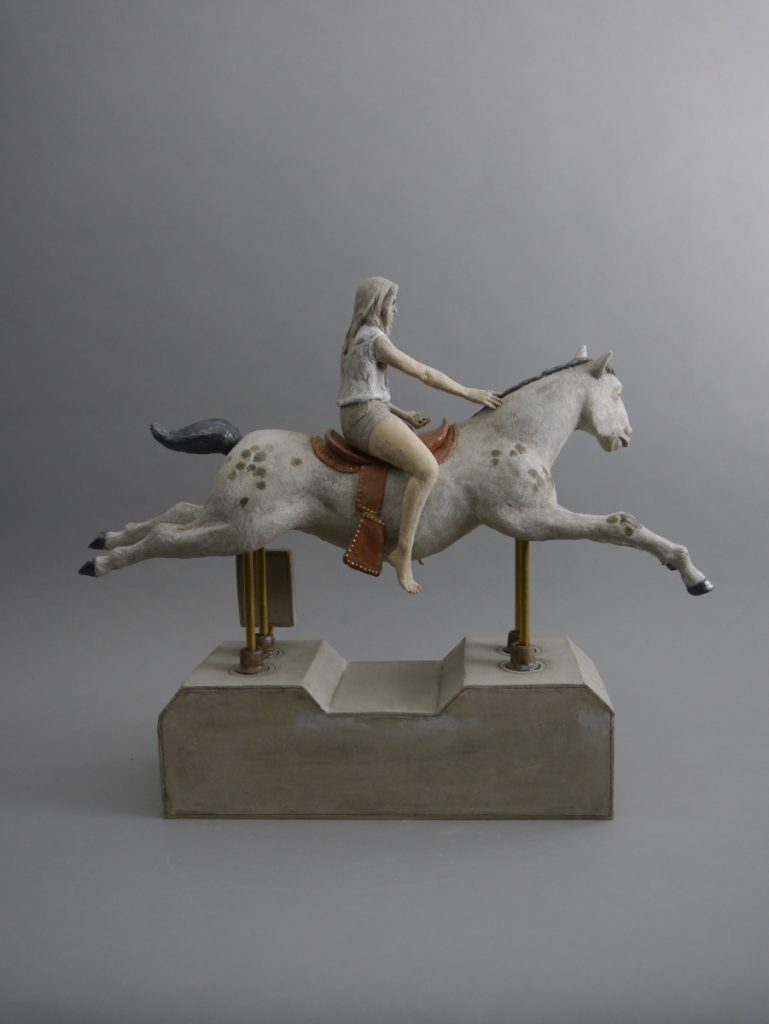
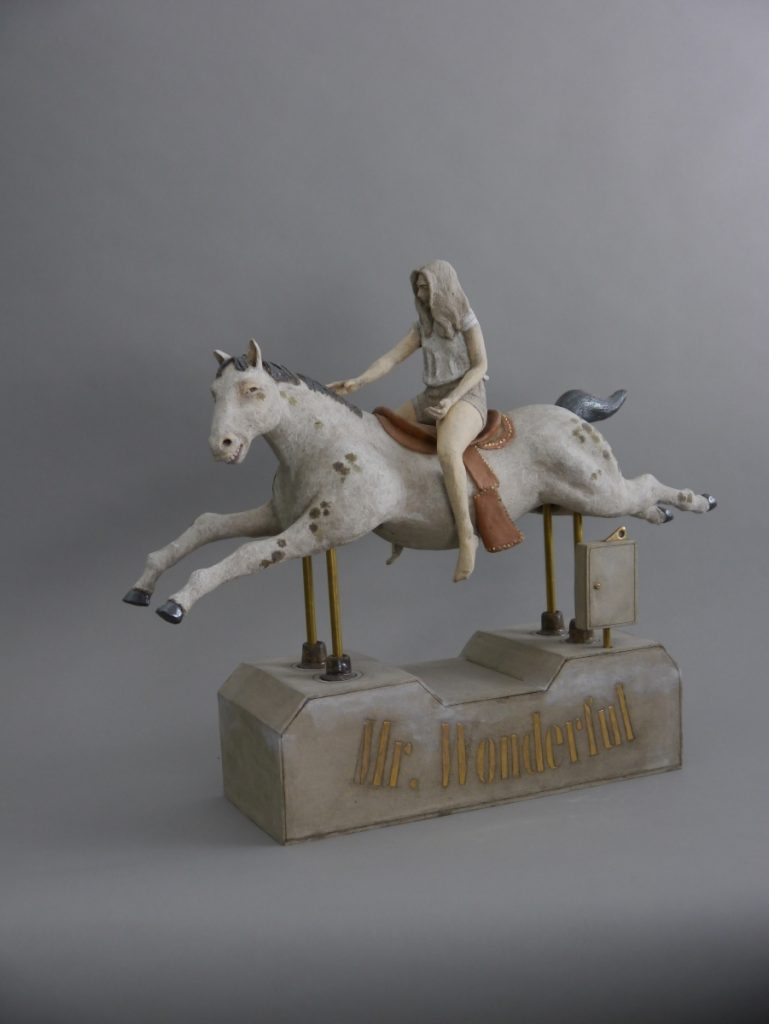
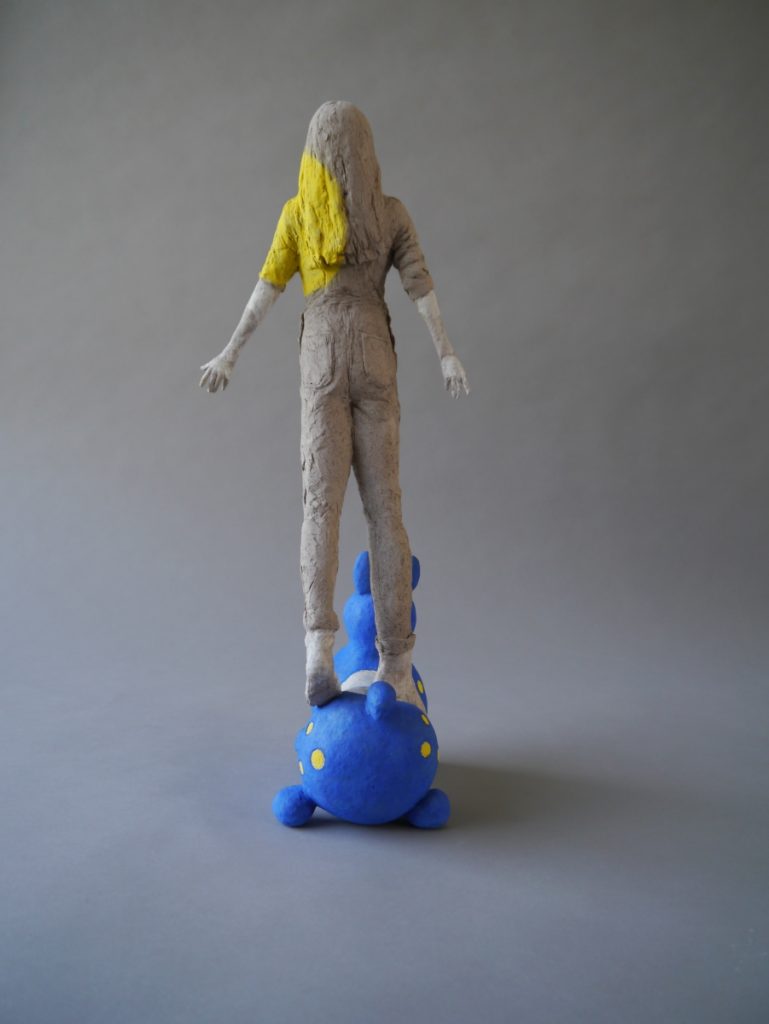
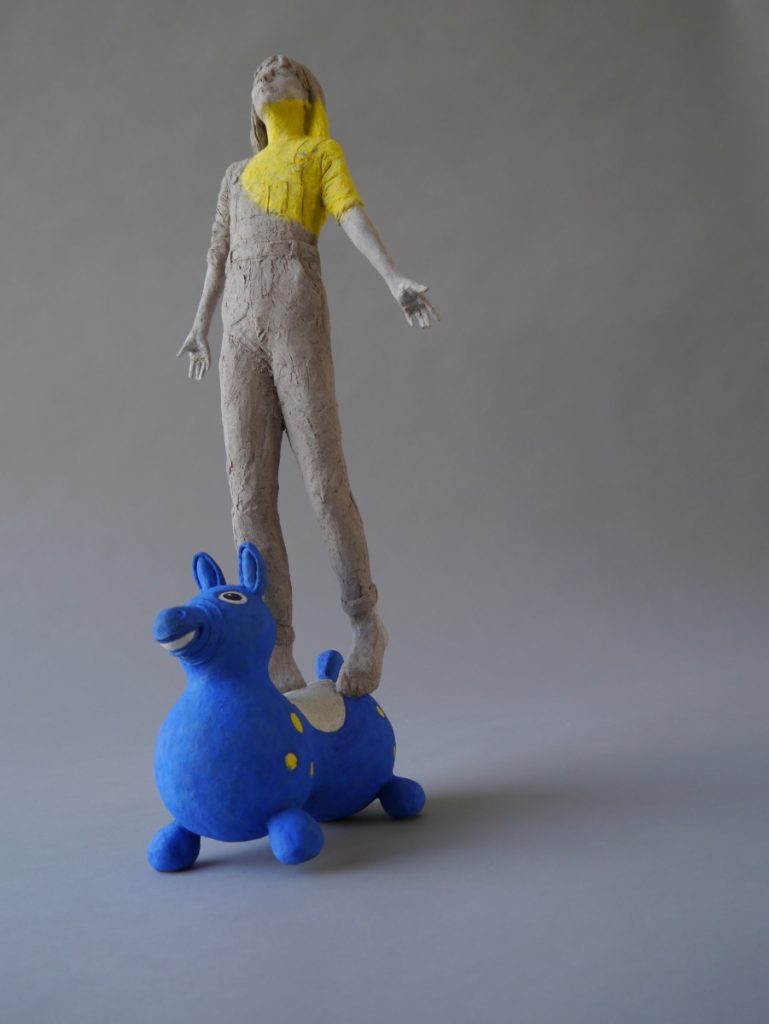
Stephanie Marie Roos: Das Glück dieser Erde…, 2021
“Das Glück dieser Erde, liegt auf dem Rücken der Pferde” (“The greatest happiness of the earth lies on the back of the horses”)
One of maybe a thousand phrases that speaks for how meaningful and deep the connection between human and horses is.
The exhibition project curated by the Galerie am Dom in Wetzlar/ Germany depicted the horse in the view of contemporary artists. My contributions to this exhibition are showing a typical way of how my images can arise.
Before the first spontaneous associations develop into a three-dimensional image, I go through a process of questioning and combining. It is a process of getting closer, integrating different perspectives, until there is a kind of balance between my first personal approach, the questions that arose about the topic, and the associations and found objects. It’s like running off without knowing where you are going to arrive.
Mr. Wonderful roots in a personal experience – a very vivid childhood memory of being seduced by a machine and the stale experience of sitting on a mechanical toy horse, although my attraction to horses as warm, gentle, and powerful animals, aroused a completely different expectation.
It is not the first time that the Kiddie Ride has been given a symbolic role in my work – for me the epitome of the fake, cold, and calculating of our time and the fact that advertising has long been using the keyboard of our emotions to make us be good consumers.
As often, I have used the self-portrait – it allows me to approach a topic emotionally. Thus, the reading of the work can also be personal and a tale of false friends and disappointed expectations.
I’ve collected tons of photos from historical kiddie rides. In the end, it seemed, they came out of the same moulding form, had the same straight gallop and their fake smile and cold eyes, looking all the same… Ready for our fantasies to be projected onto them.
The bracket that connects these three horse-works is the toy horse. Toys reveal a lot about our culture and what is important to us humans. Horse toys serve the fantasy of being faster, to be stronger, to be more powerful, to have a friend, to be a circus princess, to own a horse (The German “to own” is a word that means “to sit on”), to steer a horse.
“Nike” processes the unbearably ugly “Rody” rubber bouncer, a self-portrait as a twelve-year-old girl, vaulting as a circus princess, and the posture of the “Greek sculpture” Nike of Samothrace “and tells of delusions of grandeur.
The character of Don Quixote started with Rosinante, a sock horse that I once made for my sons, and for me the perfect companion for my adaption of Don Quixote, the antihero of the 17th century novel by Cervantes: The man who, by reading chivalric novels, blurs the line between reality and fantasy, who takes the chivalrous virtues literally and thus becomes the knight of the sad figure. I quote “@dudewithsign”, who with his cardboard posters with the banalest content, elevates the demonstration culture to a cultural issue and builds a bridge to modern times, where young people fight against windmills.
Photo captions:
- Don Quichotte, 2021, stoneware, glaze, lustre, wooden bat, 92 x 30 x 23 cm
- Mr. Wonderful, 2020, stoneware, engobe, glaze, luster, 55 x 46 x 14 cm
- Nike, 2021, stoneware, engobe, glaze, 48 x 19 x 18 cm



